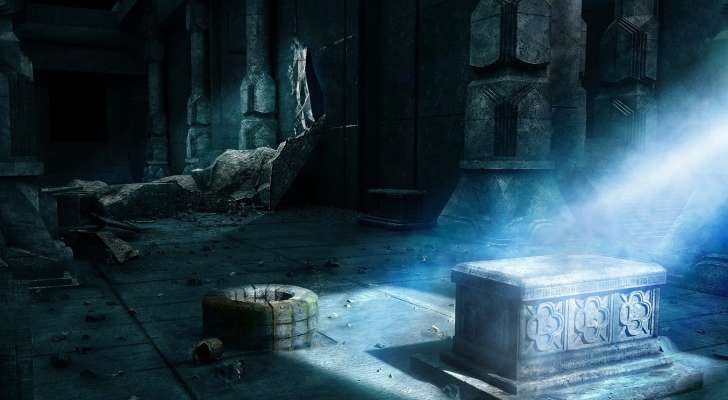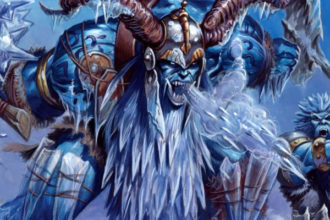The Last-Minute Dungeon Designing Guide

So, it happens all the time. Maybe the players decide to go on an unexpected tangent; or maybe they stumble upon an old map to an unknown location; or maybe, as the DM, you decide to do something unexpected either as something fun or perhaps as a punishment. No matter what the cause, you suddenly find yourself in need of a dungeon and in need of one quick!
Now I know a lot of DM’s out there who find creating original dungeons not only fun but enjoyable. I also know more than a few who would say it is their least favorite part of planning the game. Maybe it’s because they were never any good at it, maybe they don’t have the time, or maybe it all boils down to personal preference. Just like some players live for combat and others love roleplaying, a DM is allowed to dislike dungeons. Generally, I always do my best to create original dungeons for all of my campaigns rather than depend upon pre-fabs. However, creating a dungeon from scratch can be time-consuming; especially when you’re not sure what type of theme, style, or location you want your dungeon to have.
Thus to aid you in your time of need and in an effort to speed up the dungeon making process, I present my Last-Minute Dungeon Designing Guide. With these three simple steps you should be well on your way to creating a simple yet effective dungeon delve in roughly 15 minutes. Not bad considering that many of the full dungeons I create can take me upwards of 3 hours. However, I will concede that this quick guide is far from perfect, and I would not recommend that you leave all of your dungeons to the last minute.
Step 1: What and Where?
The first step on our path to a quick and dirty dungeon is answering two simple questions: 1) What kind of dungeon do I want? and 2) Where do I want it to be located? Is it in ruins surrounded by jungle? Is it an abandoned castle in the mountains? Is it what remains of a tower or a temple? You have to start with the basic questions of what and where. Once you have that answer, the next steps become a lot easier. If you can’t decide and would rather have fate/luck take the wheel, here’s a quick and very basic table you can use:
| 1d6 | What | 1d6 | Where |
| 1 | Temple | 1 | Swamp |
| 2 | Tower | 2 | Forest/Jungle |
| 3 | Caves | 3 | Mountains/Foothills |
| 4 | Mine | 4 | Beach/Coast |
| 5 | Castle | 5 | Desert |
| 6 | Ruins | 6 | Canyon/Crater |
Step 2: Mapping and Room Types
Another fun question is how big do you want this dungeon to be? And the answer can be made in several ways. How many playing minutes/hours do you want it to be? How much ‘game time’ do you want the characters to spend in the dungeon? How many encounters do you want the group to have, and so forth. Personally, I like to tackle this question from the ‘how much playing time do I want this dungeon to eat up?’ angle and I’ve found a fairly simple and accurate time system to help me calculate. Rooms or hallways with no encounters, traps, and/or riddles count for 2 minutes; rooms with traps and/or riddles but no encounters count for 10 minutes; rooms with small encounters count for 15 minutes; rooms with large encounters count for 25 minutes; and ‘Boss’ rooms count for 40 minutes. Then, after you’ve calculated the total, you add in 10% for miscellaneous/extra time.
Here’s all of that information in another little chart to help you out and, in case you just want to roll up your dungeon at random, I have assigned percentile values to each so that you can roll for what type of room comes next. Keep in mind that I have left off the “Boss” encounter room as that should only be placed in the location the DM wants it to go:
| Room Type | Time Required | Random Generator |
| Simple Room | 2 minutes | 1-9% |
| Simple Hallway/Stairs | 2 minutes | 10-19% |
| Trap/Riddle Room | 10 minutes | 20-34% |
| Trap/Riddle Hallway/Stairs | 10 minutes | 35-50% |
| Small Encounter | 15 minutes | 51-80% |
| Large Encounter | 25 minutes | 81-100% |
By this thinking, a DM can quickly design a dungeon based on how much time they have to run it. For example: let’s say you want to run your dungeon in roughly 3 hours. That gives you 180 minutes to work with. Start at the back and move forwards. 180 minutes – 18 minutes for the 10% miscellaneous/extra time gives you 162. Then, assuming you are going to have a final “Boss” encounter, subtract an additional 40 minutes. That will leave you with 122. Now you can either manually design your dungeon room-by-room, adding up the number of minutes until you reach 122, or you can roll for the rooms randomly until you come close to that number.
Step 3: Select a Theme
All of the great dungeons have a unifying theme. Sometimes it has to do with the types of monsters/encounters inside such as undead, demons, bandits, etc.; other times it has to do with the history of the place such as an old Dwarven stronghold, Elven burying ground, or an ancient battle site; and there are also things that can be done to theme together traps and riddles. The possibilities are almost endless. So how do you decide? Well, if you are following this guide, I think you have to take a moment to look back at Step 1. Take a look at the ‘what’ and the ‘where’ and that will help you decide on a solid theme. For instance, I just went back to Step 1 and rolled caves in a forest. So I’m immediately thinking about what theme works best with those two choices. A den for Orcs and Goblins jumps to mind, or perhaps a lair for an adolescent Green Dragon. Either option would make a for a great adventure and once you get the ball rolling on either Orcs or a Dragon as your focus, I think you will find the rest of theme comes together easily.
However, if you want to leave it up to fate, below is another quick theme chart you can roll. I must warn you however, some of these themes may turn out to be awkward when compared to what you have already selected for Step 1. If the theme doesn’t fit well, feel free to roll again.
| 1d20 | Theme | 1d20 | Theme |
| 1 | Demonic | 11 | Water Element |
| 2 | Earth Element | 12 | Orcish |
| 3 | Dwarven | 13 | Bandit Hideout |
| 4 | Reptiles | 14 | Ancient Battle Site |
| 5 | Lava | 15 | Gold or Silver |
| 6 | Air Element | 16 | Fire Element |
| 7 | Mirrors/Illusions | 17 | Angelic |
| 8 | Snow and Ice | 18 | Elvish |
| 9 | Undead | 19 | Giants |
| 10 | Gnomish | 20 | Dragons |
Once you have chosen or rolled for these three steps, your dungeon is 75% finished. All that is left is for you to insert monsters, traps, riddles, and treasure. Thankfully, there are dozens of online generators for these sorts of things if you need them in a hurry. However, with the dungeon type, location, size, and theme already mapped out, what remains to do should almost write itself with a little innovation and imagination.
Good luck!



